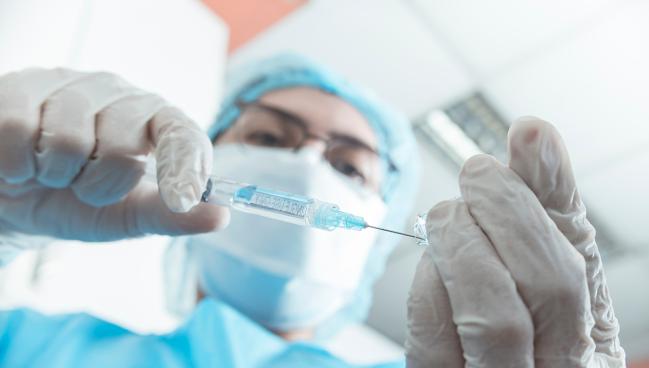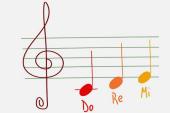US Dobutamine Shortage a ‘Huge Problem’—What’s the Solution?
With stocks not expected to stabilize until late this year or early next, hospitals should be planning ahead, one expert says.

A scarcity of dobutamine is starting to hit home for cardiologists, surgeons, and patients around the United States, catching some hospitals off guard despite warnings for months that supplies were running low.
“The dobutamine shortage is a huge problem,” Mary Norine Walsh, MD (Ascension St. Vincent Heart Center, Indianapolis, IN), told TCTMD. This is particularly true for chronic heart failure patients, many of whom are awaiting cardiac transplantation, she said. “We have been having to admit patients to the hospital who are on continuous dobutamine infusion in order to transition them to milrinone.”
Drug shortages are a reality and they've been our reality in the US for years. Craig Beavers
“There has been concern about this dobutamine shortage by colleagues across the US,” Robert J. Mentz, MD (Duke University Medical Center, Durham, NC), confirmed to TCTMD. “Given that alternative agents like dopamine are also undergoing shortages, there has been some discussion about whether the community could organize an appeal for the use of other agents like levosimendan, a medication more commonly used for acute HF in other countries,” he added. Levosimendan has been compared head-to-head with dobutamine in acute decompensated heart failure and is approved in dozens of countries worldwide, but was never cleared by the US Food and Drug Administration.
Pfizer and Baxter Healthcare supply dobutamine in the United States, and both companies list the product as limited or unavailable, citing “demand increases.” Baxter has not provided additional explanations for the shortfall, while Pfizer sent “Dear Customer” letters back in February, crediting “a complex combination of manufacturing challenges both related to COVID-19 as well as specific to flexible container products.”
Advice and Options
Heart Failure Society of America President Mark H. Drazner, MD (UT Southwestern Medical Center, Dallas, TX), told TCTMD that health professionals should be putting in place conservation strategies and contingency plans.
“Given the extent of the shortage, alternative therapies should be considered for inpatient care, outpatient home infusions, and diagnostic procedures (eg, dobutamine stress echocardiograms) when feasible,” Drazner said in an email. “Healthcare professionals will need to account for differences between dobutamine and alternative therapeutic options, and take appropriate precautions when adapting clinical care plans. It is not yet clear when the shortage will be resolved.”
Robbin G. Cohen, MD (Keck School of Medicine of USC, Los Angeles, CA), chair of the Society of Thoracic Surgeons’ media relations workforce, noted that dobutamine is a popular inotrope with cardiothoracic surgeons for postoperative care because it increases cardiac performance and decreases peripheral vascular resistance, typically without increasing the heart rate. It’s also easily dosed and managed.
“There are a number of mediations that can be used in its place, such as dopamine or epinephrine, though both tend to increase the heart rate,” Cohen said. “Milrinone can be an excellent alternative because of its inotropic and vasodilation activity, but sometimes causes low blood pressure. Cardiac surgeons are well versed in the use of all of these agents, both in the operating room and ICU. As a result, a dobutamine shortage, though inconvenient, will not significantly affect our ability to care for our surgical patients.”
Indeed, most physicians using dobutamine would already be well-aware of the alternatives, said Craig Beavers, PharmD (University of Kentucky, Lexington), chair of the American College of Cardiology (ACC)’s Cardiovascular Team council. The bigger problem is that, too often, hospitals don’t have contingency plans in place and only learn about shortages at the eleventh hour.
“Drug shortages are a reality, and they've been our reality in the US for years,” Beavers told TCTMD.
He recommends that clinicians and surgeons work closely with pharmacist teams to understand what alternatives exist and what changes to care those might entail, but also to conduct regular audits to see where most of that product is going and whether that can be streamlined.
Nothing like a nationwide shortage of #dobutamine when you are ##CCUattending #heartfailure #hearttransplant #CardioTwitter
— Jennifer Haythe MD (@DrJennHaythe) July 12, 2022
“Proactive planning is always helpful,” he said. “If I'm faced with a shortage, the first thing I do is I communicate to all my stakeholders as quickly as possible that a shortage is in existence. Then I'm going to pull my data from the last 6 months of use and I'm going to evaluate where that's being used and who those individuals are, and talk about what the alternatives are—which we should have already talked about—and then talk about how we can operationalize things differently to conserve.”
Dobutamine stress echo, he noted, is one area where hospitals are likely looking to cut back. Contingency plans should also include options for device-based support, where appropriate.
More Cross Talk Needed
Beavers believes better communication between professional organizations could go a long way to making sure physicians are prepared, and that patient care is not affected. The drug shortages update offered on the American Society of Health-System Pharmacists (ASHP) website, for example, provides clear, concise information on the dobutamine shortages and estimated resupply dates, though most clinicians are likely unaware of the resource.
“Groups like the ACC might not even know that [a drug] is in shortage, to be honest, until their members start bringing it up and complaining,” Beavers said. “So part of this is, how do we work together as organizations to keep up with these things, and make sure that information is shared? How do we get to a more utopian, holistic state where ASHP sends this information out to the ACC, or how do they get and share information from industry?”
The ASHP, he noted, has developed comprehensive tools and tips for managing drug shortages, but nonpharmacists probably aren’t aware of them.
Beavers said the reality is that most physicians only find out on a given day that either they don’t have a certain product or that it is going to be short, very soon, giving them little time to prepare.
Full “recovery” of dobutamine supplies isn’t expected until late 2022 or early 2023 for some products. Milrinone is not currently in shortage, Beavers observed, but that could change. “When one product goes down, that creates a bottleneck for another,” he said. “I get worried that because people are switching away from dobutamine to milrinone, that puts pressure on the system. And do we then see milrinone now coming in shortage? That's always a risk.”
Shelley Wood is the Editor-in-Chief of TCTMD and the Editorial Director at CRF. She did her undergraduate degree at McGill…
Read Full Bio




Comments